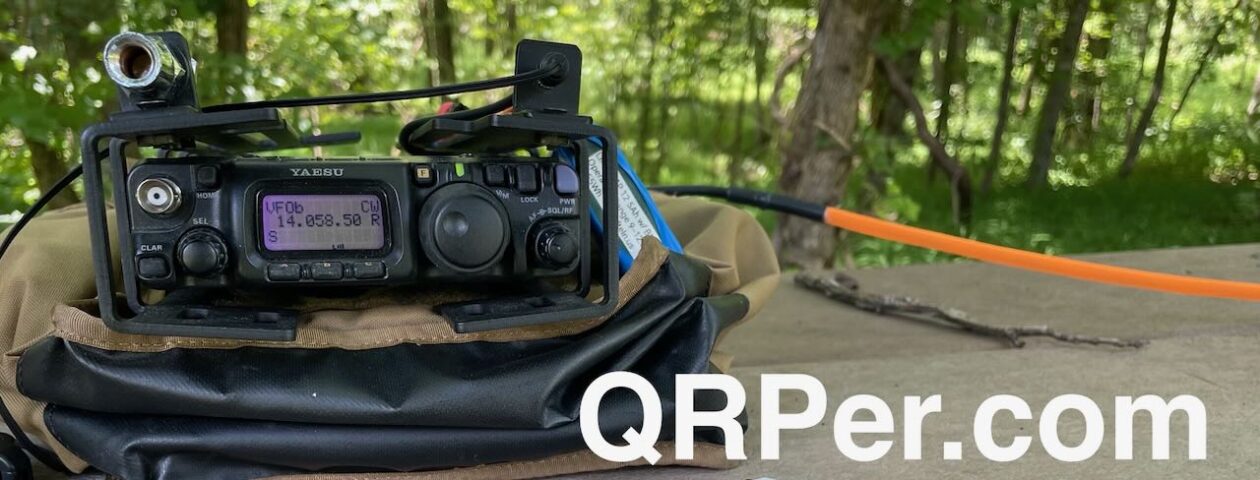Many thanks to Pedro (PP2PB) who shares the following article about his portable field radio kit which will be featured on our Field Kit Gallery page. If you would like to share your field kit with the QRPer community, check out this post.
Main bag
- Canvas bag
- Xiegu X6100 (complete with hand mic, power and usb cable) with aluminium shield
- Homemade 6Ah Lifepo4 battery
- Earbuds (an old Zune HD pair, and yes, the Zune HD still works)
- Aliexpress CW Paddle
- Coax: 5m RG-316, 2m RG-316 with homemade inline choke, 30cm RG-316 jumper
- Homemade 2m/60cm Signal Stick “clone” (The X6100 can tune it to 6m, 10m and even 12m bands!)
- 2x homemade QRP 49:1 UNUN (one 2:14T and one 3:21T) made with FT82-43 toroids
- 3x plastic S-Biners/Hooks for antennas, coax, etc.
- SO239 to BNCm and BNCf to BNCf adapters
- SD card with R1CBU alternative firmware (awesome project runs directly from SD Card without messing with original firmware) –
- Antenna wire: 26 AWG 20m, 5m, a couple 2-3m counterpoises. And a couple 30cm alligator clip jumper cables.
- BNC to banana adapter (for any type of improvised antenna)
- Some generic paracord and velcro for general purpose
Support bag
- Canvas Molle bag
- Chargers for the Lifepo4 battery and for the X6100
- Generic Chinese 4:1 balun
- Chinese watt meter
- More of the plastic S-Biners/Hooks –
- Some random length of fishing line (its my throwing line) and a heavy bolt
- Notebook for logging
- Some more generic paracord
- Homemade pi match manual antenna tuner made with a couple of AM/FM radio variable capacitors and a little coil with a tap. Handles 100W SSB with ease.
I have a few generic fiberglass poles for antenna deployment that I fitted with a guying system made of paracord: simple, slim, lightweight and strong. And generic tent stakes. I only take them when needed.
This kit is my travel, POTA, SOTA kit. The main bag contains everything needed for operation, and the support bag has a few things to prolong the operating time (on multiple day trips) and for better antenna deployment.

 I’m really into DIYing stuff and being from Brazil its hard and expensive to get stuff from USA, so DIY is the way to go.
I’m really into DIYing stuff and being from Brazil its hard and expensive to get stuff from USA, so DIY is the way to go.
The kit is about the size of a FT-857D (just the radio), and weighs less. And I have enough redundancy without getting too bulky or heavy.”


















































